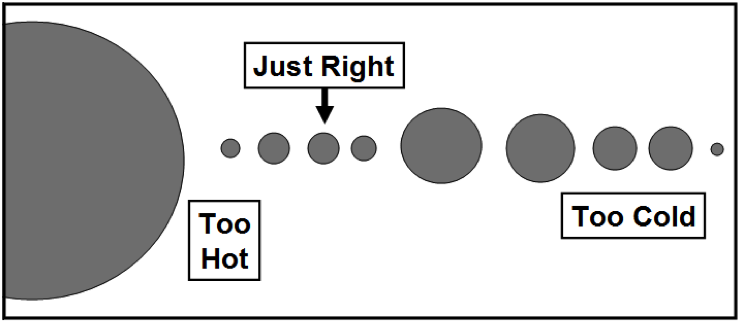The Goldilocks Principle is a concept that can be applied to a number of different situations, and today, it’s making headlines to the contrary in regards to how enhancing microscopic molecules might work with furthering 3D printing. As a team of New York University scientists work to create ‘smart materials,’ which adapt to their environment, they have discovered that polymers and colloids tell a story of their own, and they are sharing this in a recent research paper in Nature Materials.
The Goldilocks Principle is easy to understand if you think about the children’s fairytale that everyone knows. Goldilocks, after breaking and entering into the home of a family of fearsome forest-dwelling bears, describes the ‘margins’ of various pieces of their furniture, with each chair or bed exhibiting extreme qualities, but with one finally being ‘just right.’ An example with temperature would be too hot, too cold, but in the middle — nice and warm and just right.
That’s not happening in this case though.
A polymer is, as demonstrated by the prefix poly, a structure made up of many — or a string of — molecules. Colloids are molecule combinations mixed through other substances that will not settle or combine with the other substance. In this study, focusing on polymers and colloids, particles as small as one-billionth and one-millionth of a meter in size, respectively, it appears that the Goldilocks Principle does not apply here.
It’s all about the temperature, in exploring these materials which can be used in a variety of applications. Scientists have deduced that materials used and produced in 3D printing could be enhanced through the use of enthralpic attraction, which is an adhesive energy that could have the potential to benefit and further sharpen the outcome for the technology we already find to be so amazing. The properties that they are examining, also, are those that are used for a wide range of consumer products like:
With temperature ranges from room temperature to 85 degrees Celsius, the polymers bump against larger particles and are forced together due to pressure, scientists explain. The colloids make a crystal from this process through ‘maximizing the random motion of the polymers and the range of space they have the freedom to explore.’ As they get hotter, they begin to melt; however, here is the kicker: when they are melted further, they begin to harden again. The molecules form a substance like Jello — one that is much more easily manipulated than in a crystal form — thus giving forth the theory that with this type of manipulation, particles could be better suited for 3D printing.
“These findings show the potential to engineer the properties of materials using not only temperature, but also by employing a range of methods to manipulate the smallest of particles,” explains Lang Feng, the study’s lead author and an NYU doctoral student at the time it was conducted.
At the middle level, the dynamics for enthralpic attraction don’t work, and it is of great interest that the higher the heat, the better the dynamic works — and could work to better manipulate materials for 3D printing technology. What do you think of the ideas in this article and how do you see it applying to 3D printing? Share your ideas with us in the Goldilocks Principle forum at 3DPB.com.
Subscribe to Our Email Newsletter
Stay up-to-date on all the latest news from the 3D printing industry and receive information and offers from third party vendors.
Print Services
Upload your 3D Models and get them printed quickly and efficiently.
You May Also Like
Nikon SLM Solutions Sells SLM 500 to Primary Weapon Systems to Expand Suppressor Production
Primary Weapons Systems (PWS) is a Boise, Idaho-based manufacturer of suppressors, firearms, and related components. A subsidiary of Vigilant Gear and a sister company to aftermarket Glock slide manufacturer Lone...
3DPOD 261: Tooling and Cooling for AM with Jason Murphy, NXC MFG
Jason Murphy´s NXC MFG (Next Chapter Manufacturing) is not a generalist service; instead, the company specializes in making tooling. Using LPBF and binder jet, the company produces some of the...
HP and Firestorm Labs Form Partnership to Use Multi Jet Fusion 3D Printers in Deployable Factories
HP Inc., maker of a range of additive manufacturing (AM) solutions including the Multi Jet Fusion (MJF) ecosystem, has announced a partnership with Firestorm Labs, a developer of containerized, deployable...
3D Printing News Briefs, July 2, 2025: Copper Alloys, Defense Manufacturing, & More
We’re starting off with metals in today’s 3D Printing News Briefs, as Farsoon has unveiled a large-scale AM solution for copper alloys, and Meltio used its wire-laser metal solution to...



































